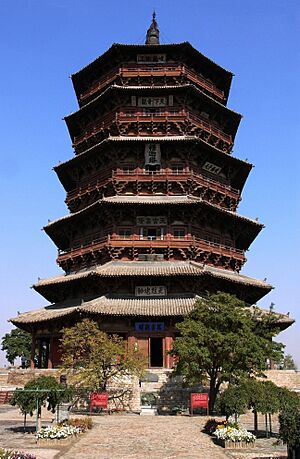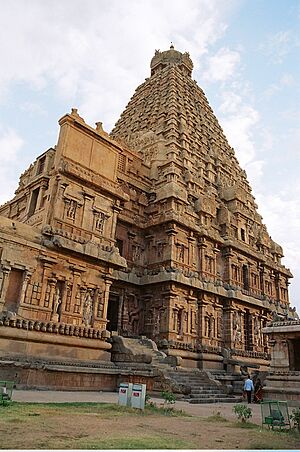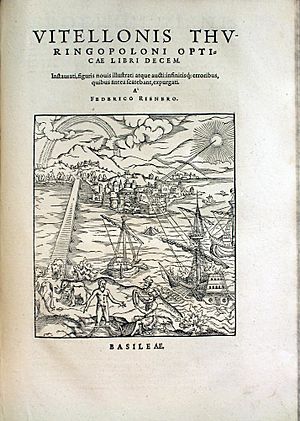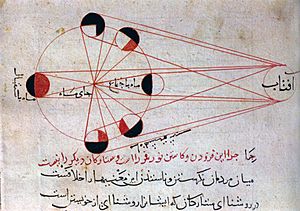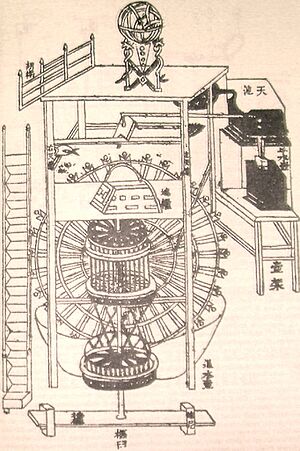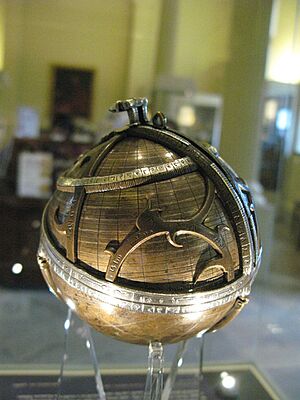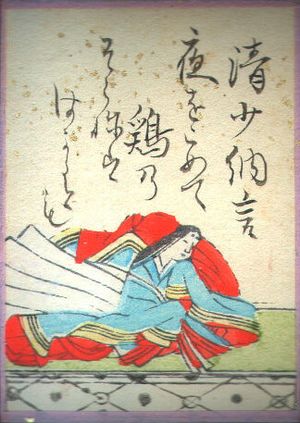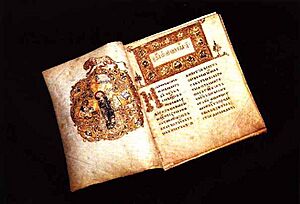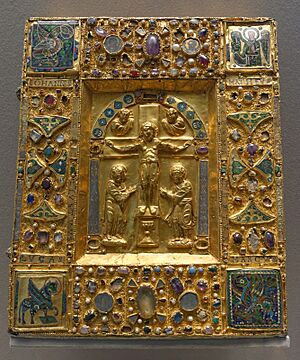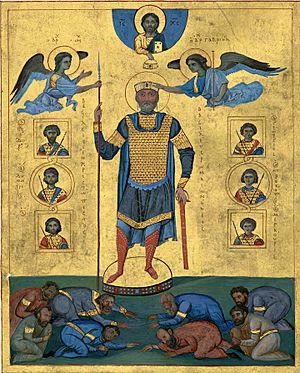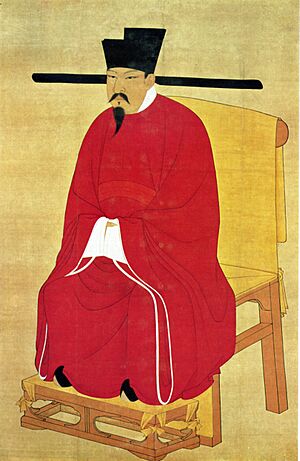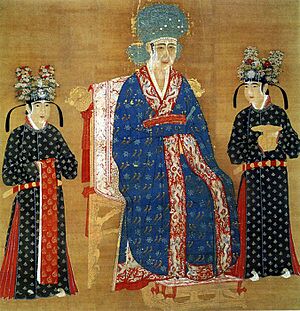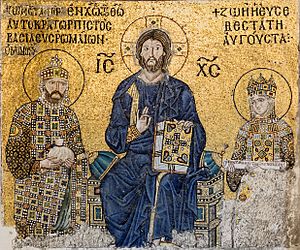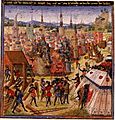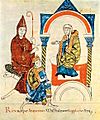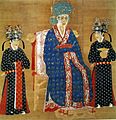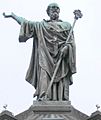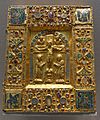11th century facts for kids
| Millennium: | 2nd millennium |
|---|---|
| Centuries: | 10th century · 11th century · 12th century |
| Decades: | 1000s 1010s 1020s 1030s 1040s 1050s 1060s 1070s 1080s 1090s |
| Categories: | Births – Deaths Establishments – Disestablishments |
The 11th century was a period of 100 years, from 1001 to 1100. It was a time of big changes and important events all over the world. Many new kingdoms rose, and old empires faced challenges. People saw new ideas in science, art, and religion. This century set the stage for many things that would happen later in history.
Contents
Major Events Around the World
The 11th century saw many important events that shaped different parts of the world. From Europe to Asia and Africa, people experienced big changes in how they lived and were governed.
Europe: Kings, Castles, and Crusades
Europe during this time was a place of powerful kings and growing kingdoms. Many famous events happened here.
The Norman Conquest of England
One of the most famous events was the Norman Conquest in 1066. William the Conqueror, a duke from Normandy (part of modern-day France), invaded England. He defeated King Harold II at the Battle of Hastings. This changed England forever, bringing new rulers, language, and ways of life. The famous Bayeux Tapestry tells this story.
The Domesday Book
After taking over England, William the Conqueror ordered a huge survey of the land. This was called the Domesday Book, completed in 1086. It listed all the land, people, and animals in England. It helped him know what taxes to collect and how to rule his new kingdom.
The First Crusade
Towards the end of the century, a major religious war began. In 1095, Pope Urban II called for Christians to go to the Holy Land to take back control of Jerusalem. This led to the First Crusade. Many knights and soldiers traveled far to fight. In 1099, they captured Jerusalem. This event had a huge impact on relations between Europe and the Middle East for centuries.
The Great Schism
In 1054, a major split happened within Christianity. The Christian Church divided into two main branches: the Roman Catholic Church in the West and the Eastern Orthodox Church in the East. This event is known as the Great Schism. It was caused by differences in religious practices and who had authority.
Asia: Powerful Empires and New Ideas
Asia was home to some of the world's largest and most advanced empires during the 11th century.
China's Song Dynasty
In China, the Song Dynasty was a time of great progress. They invented many things, like gunpowder, printing, and the compass. Their cities were large and busy. They also built impressive structures, like the Pagoda of Fogong Temple, a huge wooden pagoda built in 1056.
India's Chola Dynasty
In southern India, the Chola dynasty was very powerful. They built amazing temples, like the Brihadisvara Temple, finished in 1010. This temple is famous for its tall tower and beautiful sculptures. The Chola kings also had a strong navy and traded across the seas.
Islamic Golden Age
The Islamic world continued its "Golden Age" of learning and discovery. Scholars made big advances in science, medicine, and mathematics. For example, Ibn al-Haytham (also known as Alhazen), an Iraqi physicist, wrote the Book of Optics in 1021. This book changed how people understood light and vision.
Africa: Growing Kingdoms and Trade
In Africa, powerful kingdoms grew through trade and strong leadership.
Fatimid Caliphate
In North Africa and parts of the Middle East, the Fatimid Caliphate was a major power. They were known for their beautiful art and architecture. They also controlled important trade routes.
West African Empires
In West Africa, empires like the Ghana Empire were rich from trading gold and salt across the Sahara Desert. These empires had well-organized governments and strong armies.
Science and Technology
The 11th century saw important developments in science and technology across different cultures.
Astronomy and Timekeeping
Astronomers in the Islamic world and China made new observations and created better tools. The spherical astrolabe was used to study the stars and tell time. In China, Su Song built a huge clock tower in 1092. It was powered by water and used a complex system of gears and chains.
Medicine and Mathematics
Medical knowledge continued to advance, especially in the Islamic world. Doctors studied human anatomy and developed new treatments. In mathematics, scholars worked on algebra and geometry, building on earlier knowledge.
Art and Culture
Art and culture flourished in many parts of the world, creating lasting legacies.
Architecture
Grand buildings were constructed, from the towering temples of India to the wooden pagodas of China and the cathedrals of Europe. These structures often showed the power and beliefs of the people who built them.
Literature and Art
Literature also thrived. In Japan, Lady Sei Shōnagon wrote her famous The Pillow Book, giving us a look into court life. In Europe, beautiful illuminated manuscripts were created, like the Ostromir Gospels. Artworks like ivory carvings and intricate metalwork showed great skill.
Important People
Many important leaders and thinkers lived during the 11th century.
- William the Conqueror (c. 1028–1087): The Duke of Normandy who became King of England after the Norman Conquest.
- Basil II (958–1025): A powerful Byzantine Emperor who expanded his empire.
- Canute the Great (c. 995–1035): A Viking king who ruled England, Denmark, and Norway.
- Alfonso VI of León and Castile (1040s–1109): A king who played a key role in the Reconquista in Spain.
- Empress Agnes (c. 1024–1077): A German Queen who became regent of the Holy Roman Empire.
- Emperor Shenzong of Song (1048–1085): A Chinese emperor known for his reforms.
- Pope Urban II (c. 1042–1099): The Pope who called for the First Crusade.
Images for kids
-
Political boundaries in Eastern Hemisphere in early half of 11th century
-
The Brihadisvara Temple of Chola era southern India, completed in 1010, during the reign of Rajaraja I
-
An 11th-century rock crystal ewer of Fatimid Egypt
-
Defeat of the Bulgarians by the Byzantines depicted in the Madrid Skylitzes
-
Celadon statue of an imperial guardian lion of the Chinese Song dynasty, 11th or 12th century
-
Territories of Zirids and Hammadids after the invasions of Banu Hilal, of Norman incursions and the weakening of the Almoravids
-
A flat casket carved out of ivory from Al-Andalus (Islamic Spain), c. 1050
-
The Bayeux Tapestry depicting events leading to the Battle of Hastings in 1066
-
An 11th-century Chola Dynasty bronze figurine of Arthanariswara
-
A page of the Domesday Book of England
-
St Albans Cathedral of England, completed in 1089
-
The Gonbad-e Qabus Tower, built in 1006 during the Ziyarid Dynasty of Iran
-
Pagoda of Fogong Temple, built in 1056 in Shanxi, China by the Khitan Liao dynasty in 1056
-
Latin translation of the Book of Optics (1021), written by the Iraqi physicist, Ibn al-Haytham (Alhazen)
-
The original diagram of Su Song's book Xin Yi Xiang Fa Yao (published 1092) showing the clepsydra tank, waterwheel, escapement mechanism, chain drive, striking clock jacks, and armillary sphere of his clock tower
-
Diagram from al-Bīrūnī's book Kitab al-tafhim showing lunar phases and lunar eclipse
-
The spherical astrolabe, long employed in medieval Islamic astronomy, was introduced to Europe by Gerbert d'Aurillac, later Pope Sylvester II.
-
The Ostromir Gospels of Novgorod, 1057
-
Empress Agnes, German Queen who became regent of the Holy Roman Empire
-
Basil II of the Byzantine Empire.
-
Angels crowning Canute the Great as he and his wife Ælfgifu of Northampton present the Winchester Cross to the church, dated 1031
-
Statue of Lady Li Qingzhao in the Grand Hall of Poets in Du Fu Cao Tang, China
-
Matilda of Tuscany military leader from Italy
-
Emperor Shenzong of Song China
-
Chinese Empress Cao, wife of Emperor Renzong of Song.
-
Lady Sei Shōnagon, wrote her Pillow Book about life in the Japanese court
-
Pope Urban II of Rome
-
Statue of William the Conqueror, holding Domesday Book on the West Front of Lichfield Cathedral.
-
11th century mosaic of Constantine IX Monomachos, Empress Zoe, and Jesus Christ in the Hagia Sophia.
-
An 11th-century reliquary of gold and cloisonné over wood, from the Duchy of Brabant, Maastricht Cathedral, now housed in the Louvre.
See also
 In Spanish: Siglo XI para niños
In Spanish: Siglo XI para niños








